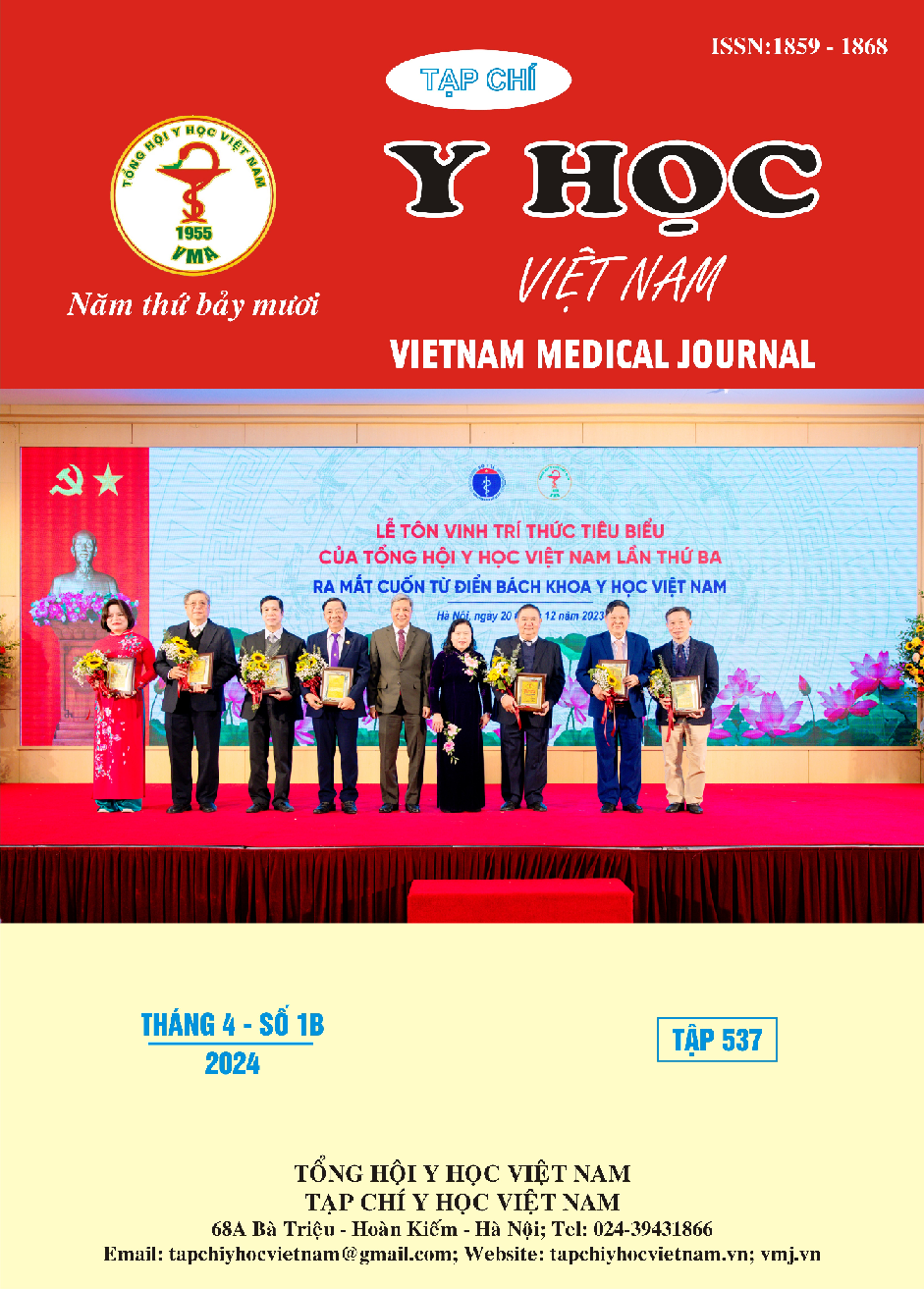ĐẶC ĐIỂM LÂM SÀNG, CẬN LÂM SÀNG BỆNH NHÂN KHUYẾT HỔNG PHẦN MỀM SAU CẮT BỎ KHỐI U VÙNG MẶT TẠI BỆNH VIỆN HỮU NGHỊ ĐA KHOA NGHỆ AN
Nội dung chính của bài viết
Tóm tắt
Mục tiêu: Mô tả đặc điểm lâm sàng, cận lâm sàng bệnh nhân khuyết hổng phần mềm sau cắt bỏ khối u vùng mặt tại Bệnh viện Hữu nghị Đa khoa Nghệ An. Đối tượng và phương pháp nghiên cứu: Nghiên cứu gồm 34 bệnh nhân có tổn thương khuyết hổng phần mềm vùng mặt sau cắt bỏ khối u được tạo hình bằng vạt tại chỗ tại Bệnh viện Hữu nghị Đa khoa Nghệ An từ tháng 01/2017 đến tháng 11/ 2022. Kết quả: Tỷ lệ Nam và Nữ gần như tương đương (41,18% và 58,82%). Nhóm tuổi trên 55 tuổi chiếm tỉ lệ cao nhất với 29 trường hợp. Nhóm nguyên nhân khuyết hổng phần mềm sau cắt bỏ khối u kết quả giải phẫu bệnh chủ yếu là các khối ác tính 70,59 %, u lành tính 23,53% và u sắc tố bẩm sinh là 5,88%. Vị trí tổn thương nhiều nhất là vùng má với mắt với 29,41%, tiếp đó là vùng mũi 26,47%% và vùng thái dương là 2,94%. Kích thước tổn thương chủ yếu > 3 cm² với tỉ lệ 47,06%. Kết luận: Nguyên nhân chủ yếu gây khuyết hổng vùng mặt là cắt bỏ các khối u. Phẫu thuật chuyển vạt nên được áp dụng để che các vùng khuyển hổng này.
Chi tiết bài viết
Từ khóa
Đặc điểm lâm sàng, cận lâm sàng, bệnh nhân khuyết hổng phần mềm vùng mặt.
Tài liệu tham khảo
2. Bạch Minh Tiến (2002), Luận văn thạc sỹ y học, ”đánh giá kết quả sử dụng Vạt trục mạch và vạt rãnh mũi má trong điều trị tổn khuyết phần mềm vùng mũi”, Đại Học Y Hà Nội, Hà Nội.
3. Glanz K., Schoenfeld E.R., và Steffen A. (2010). A randomized trial of tailored skin cancer prevention messages for adults: Project SCAPE. Am J Public Health, 100(4), 735–741.
4. Kim Y.J., Cho H.H., Kim S.O. và cộng sự. (2015). Reconstruction algorithm for nasal basal cell carcinoma with skin involvement only: analysis of 221 cases repaired by minor surgery. Clinical and Experimental Dermatology, 40(7), 728–734.
5. Abbas O.L. và Borman H. (2012). Basal Cell Carcinoma: A Single-Center Experience. ISRN Dermatol, 1–6.
6. Kauvar A.N.B., Cronin T., Roenigk R. và cộng sự. (2015). Consensus for nonmelanoma skin cancer treatment: basal cell carcinoma, including a cost analysis of treatment methods. Dermatol Surg, 41(5), 550–571
7. Nguyễn Quang Rực (2019), Luận văn thạc sỹ y học, “Đánh giá kết quả phẫu thuật tạo hình khuyết phần mềm kích thước vừa và nhỏ sau cắt bỏ ung thư da tế bào đáy vùng mặt”, Đại Học Y Hà Nội, Hà Nội.
8. Phạm Cao Kiêm (2006). Đánh giá các phương pháp tạo hình bằng tổ chức tại chỗ trong điều trị ung thư thế bào đáy ở đầu mặt cổ theo phẫu thuật Mohs.


